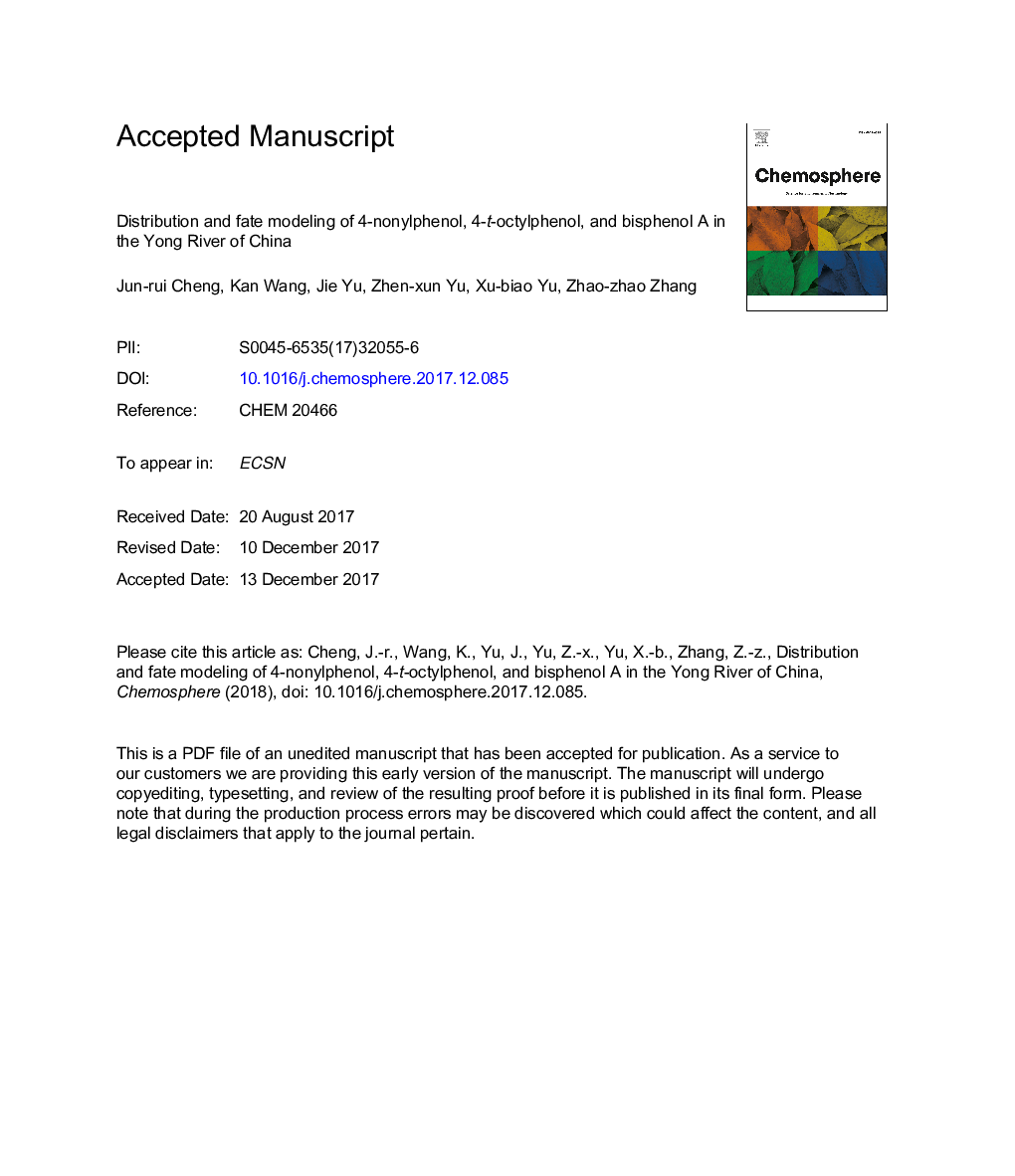| Article ID | Journal | Published Year | Pages | File Type |
|---|---|---|---|---|
| 8852241 | Chemosphere | 2018 | 41 Pages |
Abstract
In this study, the concentrations of 4-nonylphenol (4-NP), 4-tert-octylphenol (4-t-OP), and bisphenol A (BPA) in the water column of the Yong River were investigated and found to be in the range of 140-3948, 6-828, and 15-1415â¯ngâ¯Lâ1, respectively. A fate and transport model coupled with the Water Quality Analysis Simulation Program (WASP) was developed. After model calibration and validation, the distributions of 4-NP, 4-t-OP, and BPA in the Yong River were modeled for the duration of 2015. The total contaminant loads from the upstream boundary, four tributaries and two wastewater treatment plants were determined to be 2318â¯kgâ¯yrâ1 for 4-NP, 506â¯kgâ¯yrâ1 for 4-t-OP, and 970â¯kgâ¯yrâ1 for BPA. Both measured and modeled results reported higher concentrations of the selected contaminants near river confluences and at the outfalls of the wastewater treatment plants. Peak concentrations were found to always appear in months with relatively reduced precipitation. The influences of adsorption and degradation on the dissolved concentrations of the selected chemicals were also modeled. The combined effects of adsorption and degradation were found to reduce dissolved concentrations of 4-NP, 4-t-OP, and BPA by 17.9%, 30.7%, and 12.1%, respectively. Adsorption was shown to reduce 4-NP concentrations in the Yong River more than degradation. Conversely, adsorption and degradation caused almost equal reductions in the dissolved concentrations of 4-t-OP and degradation caused larger decreases than adsorption in the dissolved concentrations of BPA.
Related Topics
Life Sciences
Environmental Science
Environmental Chemistry
Authors
Jun-rui Cheng, Kan Wang, Jie Yu, Zhen-xun Yu, Xu-biao Yu, Zhao-zhao Zhang,
